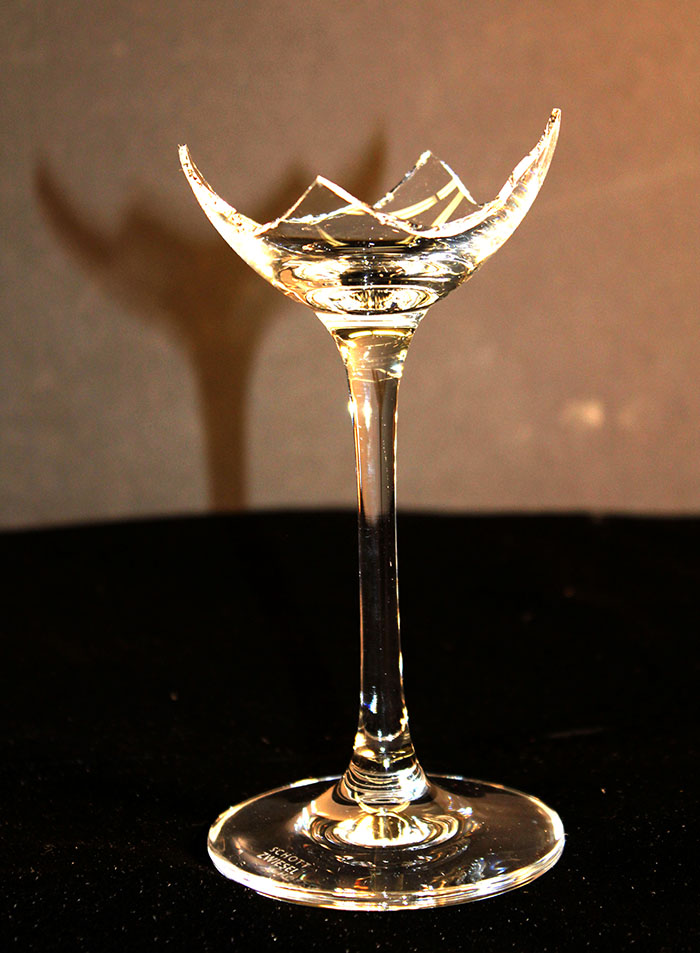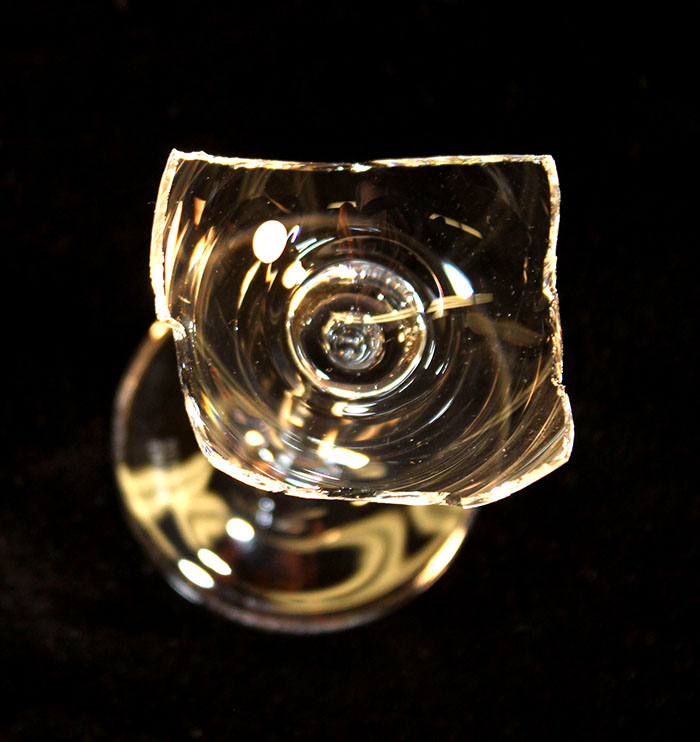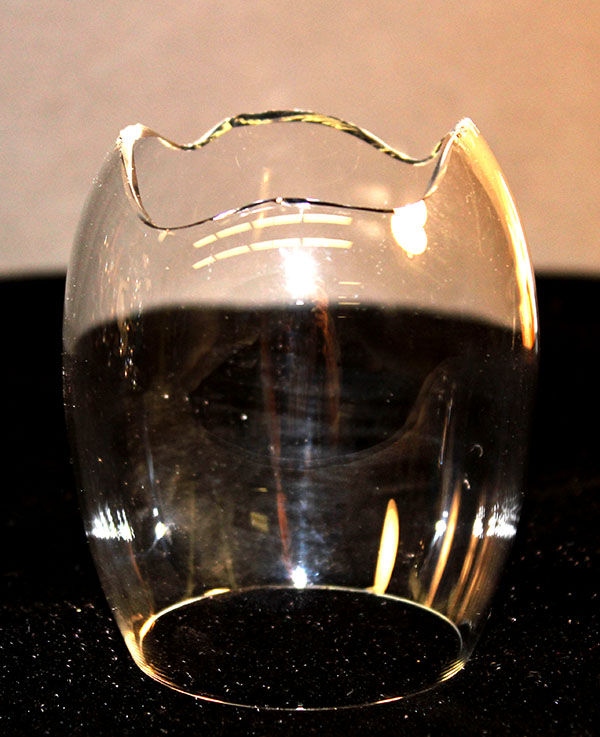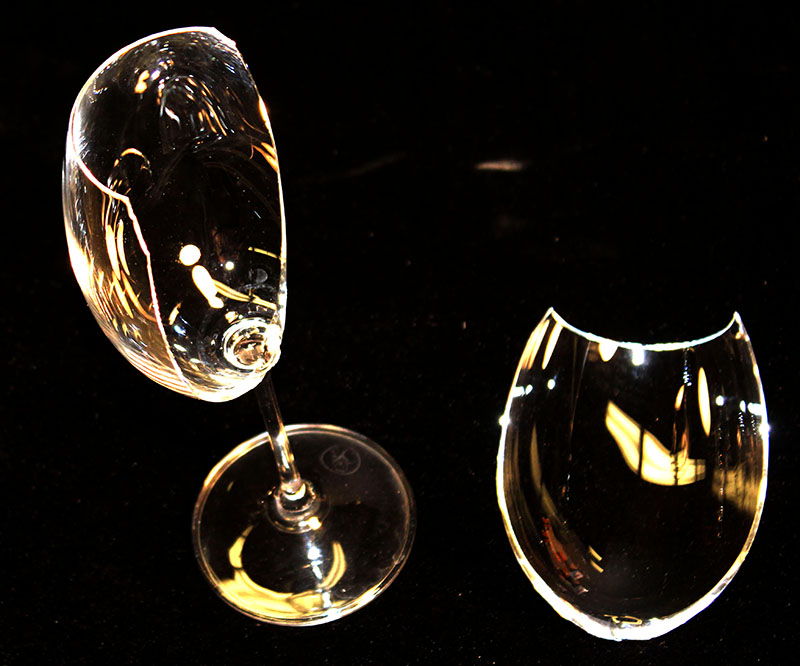- 1. Mechanics
- 2. Harmonic Motion, Waves and Sound
- A. Simple Harmonic Motion
- B. Waves
- C. Acoustics
- 10. Effects of Sound
- 10. Acoustical Interference
- 20. Acoustical Perception
- 30. Beats and Sympathetic Vibration
- 40. Bell in Vacuum
- 50. Breaking Glass with Sound
- 60. Chladni Plate
- 70. Doppler Shift
- 80. Flame Tube
- 90. Helmholtz Resonator
- 100. Kundt's Tube
- 110. Rijke Tubes
- 120. Rudnick's Acoustical Cavity and Motor
- 130. Science of Sound Tape
- 140. Voice with Helium
- 20. Musical Instruments
- 10. Effects of Sound
- 3. Matter and Thermodynamics
- 4. Electricity and Magnetism
- 5. Light and Optics
- 6. Modern Physics
- 7. Astronomy
- 8. Software and Multimedia
- 9. Index and code conversion from older manual
- External Resources
50. Breaking Glass with Sound

Loading the player...
This demonstration requires a fair amount of equipment. A stereo amplifier, whose output goes to a horn driver near the wine glass to be broken, can be switched between a frequency generator, easily tuned through a broad spectrum, and a frequency synthesizer which can generate a?very accurate frequency. The response of the wine glass to the sound is monitored with a microphone connected to an oscilloscope. The first four steps can be prepared before the lecture, but most instructors like to run through them with the class so the students can see the entire operation.
- Flick the wine glass with you finger to "ring" it. With the amplifier set at low hearing volume, tune the frequency generator until you hear a similar pitch.
- Watching the response on the scope, tune the frequency generator until you hit the resonance of the wine glass where the signal on the oscilloscope becomes much larger.
- Read off the approximate resonance frequency from the frequency counter and enter this number on the frequency synthesizer. Switch the amplifier over to the frequency synthesizer input.
- With the synthesizer in the "edit" mode, change the frequency one hertz at a time until you hit the resonance again. Now tune by tenth hertzes until you reach the maximum peak.
- Move the microphone away from the wine glass and place the Plexiglas shield in front (to prevent broken glass from spraying into the class).
- Turn up the amplifier volume to quite loud and the glass will break. The sound is loud, but not painful to the operator. At the position of the glass, it is approximately 140 dB.
We have the Tacoma Narrows Bridge collapse on videodisk. There is also a good online version which you can link to. The link is clickable Tacoma Narrows Bridge Story http://youtube.com/watch?v=ASd0t3n8Bnc
The fundamental resonance of a wineglass is the bell mode which can be seen in the strobed video above. Two wavelengths of the resonant frequency fit around the rim, travelling in opposite directions, constructively and destructively interfering. There are four nodal points along the rim of the glass which don't move. In between the nodal points the glass walls are moving back and forth. Sometimes when the glass shatters it leaves evidence of the nodal structure as seen in the gallery below. The last two are rare breaks.




